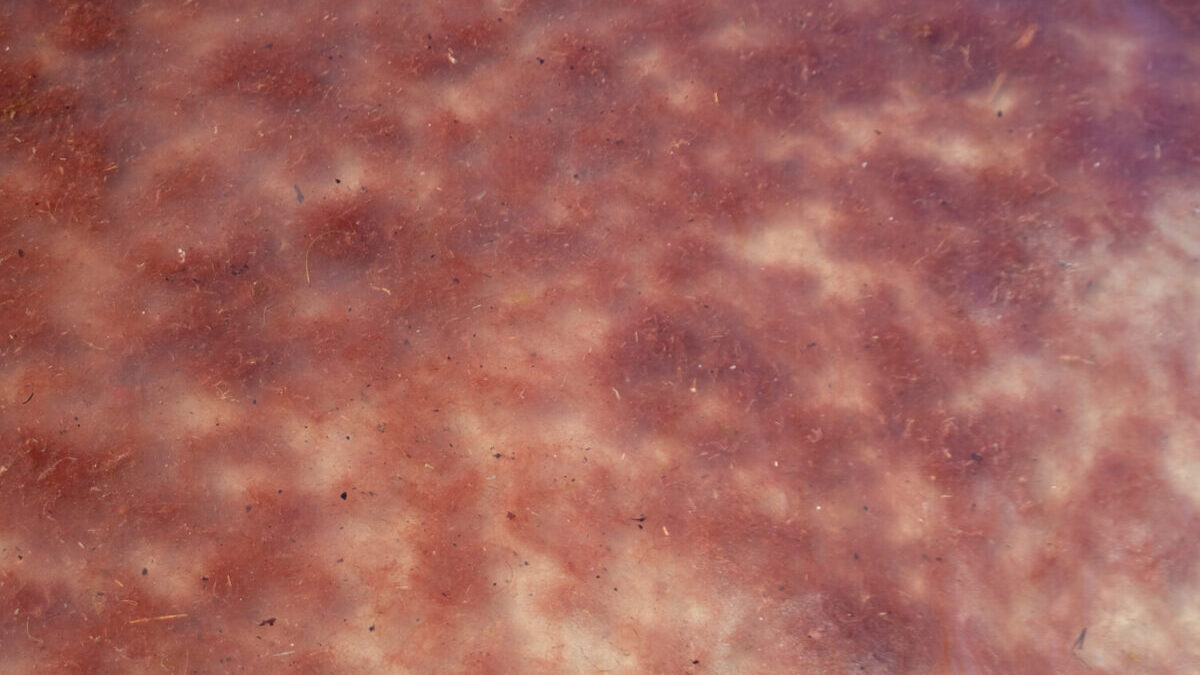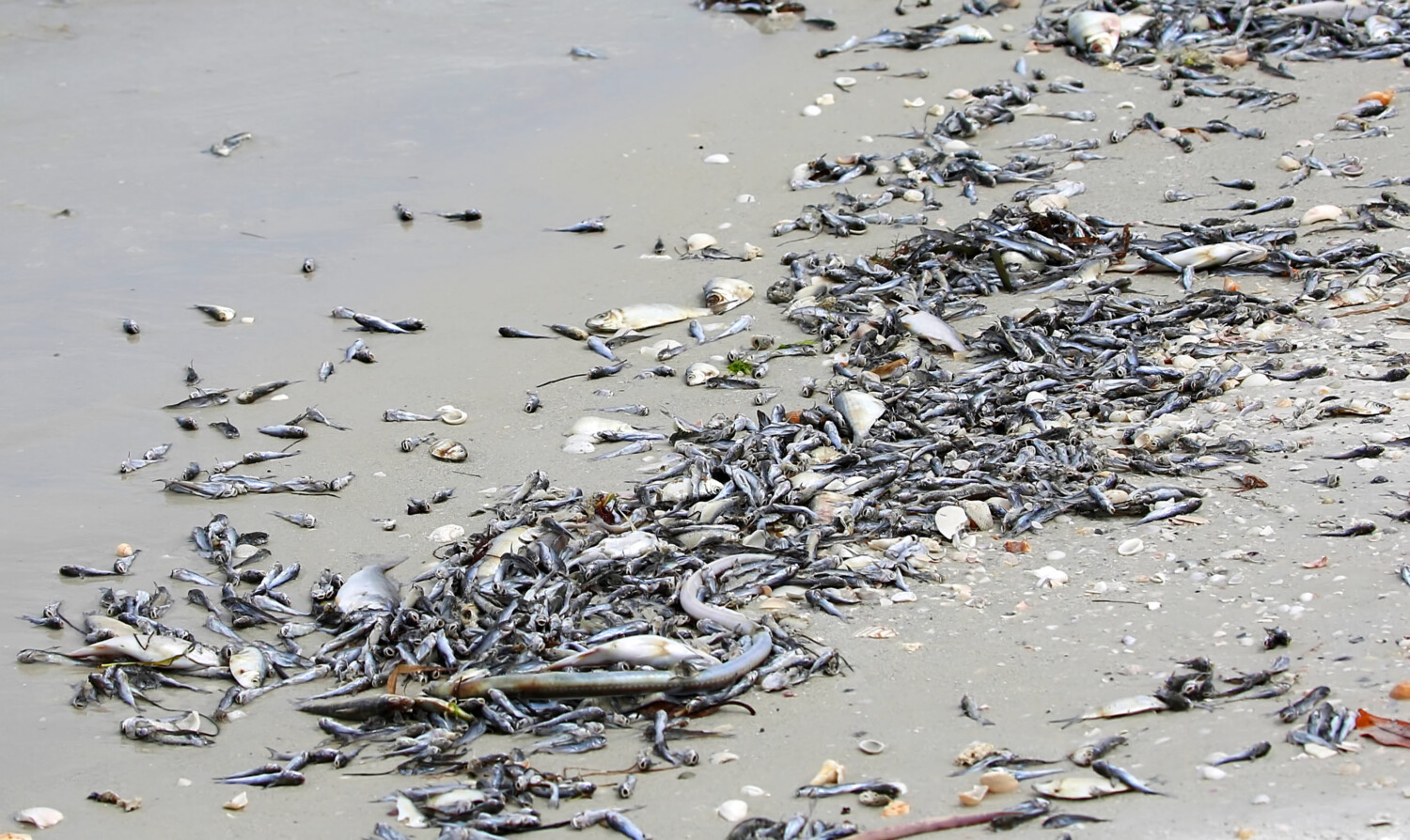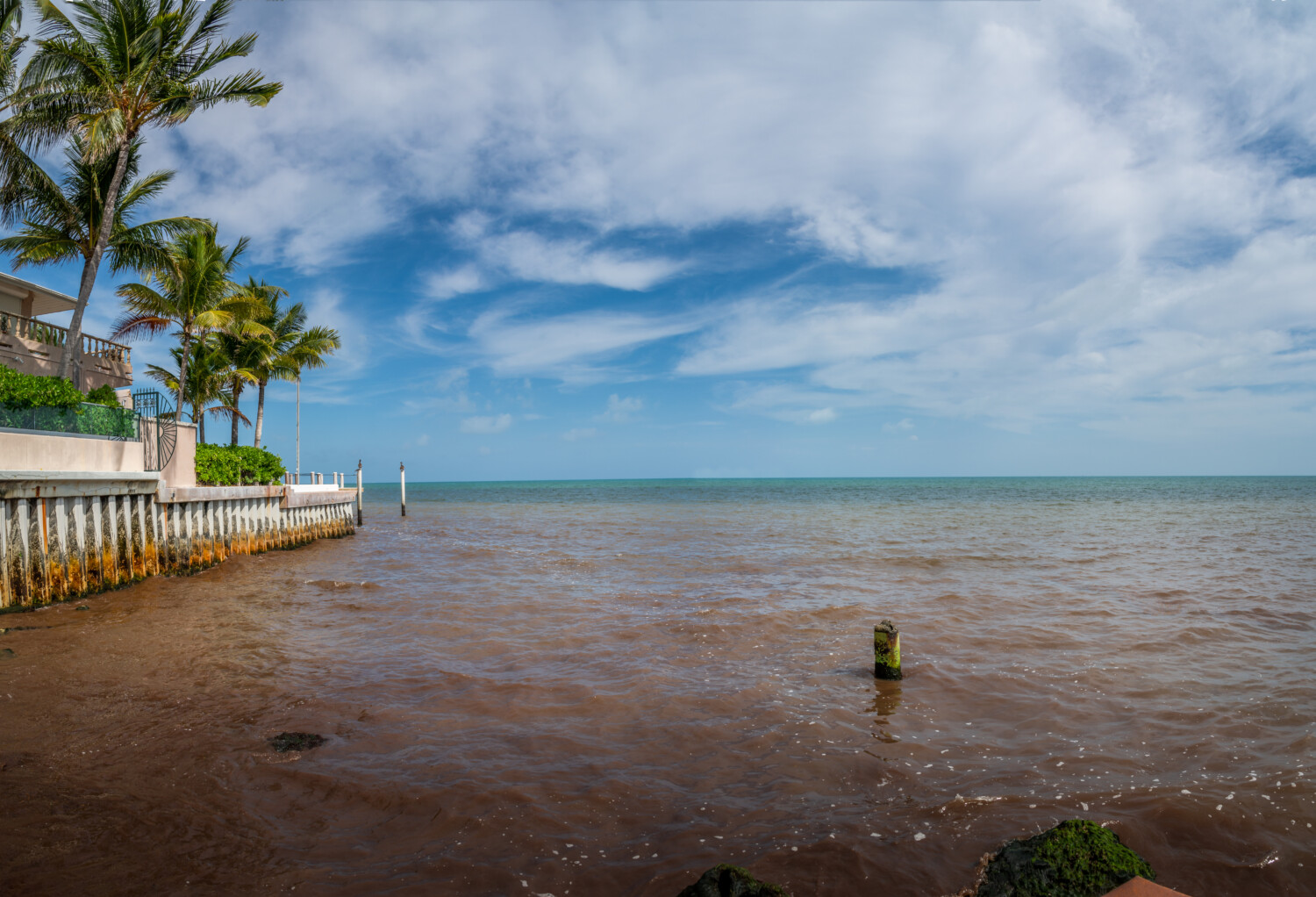It’s always unsettling to hear dead fish are washing up on the shores of beaches. This time, it’s happening in Southwest Florida due to a toxic alga known as Karenia brevis.
The red tides appear to be affecting humans and animals in Florida counties such as Pinellas, Manatee, Sarasota, Charlotte, Lee and Collier. Here’s what you should know about them.
What Is A Red Tide?
Basically, a red tide is an algae bloom, when higher-than-normal concentrations of microscopic organisms collect in one area of the ocean and start to multiply. While they might seem like a new phenomenon, red tides have been occurring since they were first observed in the Gulf of Mexico in the 1700s.
Red tides happen all over the world, caused by different algae species. This particular strain is found almost exclusively in the Gulf of Mexico. The algae can grow far offshore and pile up near the coast in the fall and winter. Usually, it’s gone by the spring, but not always.

Are Red Tides Dangerous?
When levels reach 10,000 cells per liter, the brevetoxins produced by red tides can kill fish, birds and mammals by damaging their nervous system and causing paralysis. The action of waves can open K. brevis cells and release them into the air. These toxins have been known to cause breathing problems in humans, such as coughing, wheezing and sore throats. Additionally, the toxins can collect in filter feeders (oysters and clams), leading to shellfish poisoning for people who consume them.
According to the Florida Fish and Wildlife Conservation Commission, levels from Tampa Bay south to Marco Island range from 10,000 cells per liter to more than 1 million cells per liter right now. High concentrations can discolor the water, causing it to turn red, light or dark green, or brown.
How Long Can Red Tide Blooms Last?
The duration of a red tide really depends. Blooms can last for days, weeks or months. They can also subside and reoccur. How long it lasts depends on factors such as wind and water currents, with onshore winds bringing it near the shore and offshore winds carrying it out to the sea.
Sunlight, salinity levels, water temperature, and the availability of nutrients for growth also affect red tide growth. Grazing by zooplankton and small fish, along with competition with other species, can help reduce it. Some also believe that human activity has played a role in making these blooms more frequent, as this has increased the number of nutrients that enter coastal waters.

What Should You Do?
Stay away from areas that are known to have red tide and avoid discolored water; pay attention to warnings. If you have sensitive skin, it will likely get irritated. Red tide can also cause rashes and irritation to eyes, noses and throats. Of course, swimming near dead fish is not advised.
If you do end up with it on your skin, rinse it off with warm water and soap. Over-the-counter allergy antihistamines can help with minor breathing problems, skin irritations or stomach issues. Just be sure to consume a lot of water to stay hydrated. And be especially careful if you’re prone to respiratory issues in the first place.
When toxins are airborne, they can create temporary problems like coughing, sneezing and teary eyes. You may want to wear a particle filter mask and keep an eye on the marine forecast. If lung irritation occurs, it’s best to move to an air-conditioned space.
Florida health officials also recommend keeping pets away from red tide areas, as they can also become sick.

Stay Away From Contaminated Shellfish
Seafood restaurants and hotels are monitoring what is safe to eat. Always get your seafood from trusted sources and don’t eat shellfish from a red tide area without consulting the Florida Department of Agriculture and Consumer Services to make sure the harvest is safe.
Note that food poisoning can occur from eating shellfish that contain these toxins. The toxins are not detectable by taste or odor and cannot be removed by cooking, freezing or other preparation methods. People who consume the brevetoxins can experience Neurotoxic Shellfish Poisoning, which can cause vomiting, diarrhea, gastrointestinal issues, respiratory distress, tingling or numbness in the mouth and alternating hot flashes and chills. Symptoms occur within 24 hours of ingestion and can last for a few hours to several days.
The current red tide doesn’t necessarily mean you can’t hit the beach this season. Stay tuned to state and local resources to help you find areas that haven’t been affected.
This story originally appeared on Simplemost. Check out Simplemost for additional stories.


